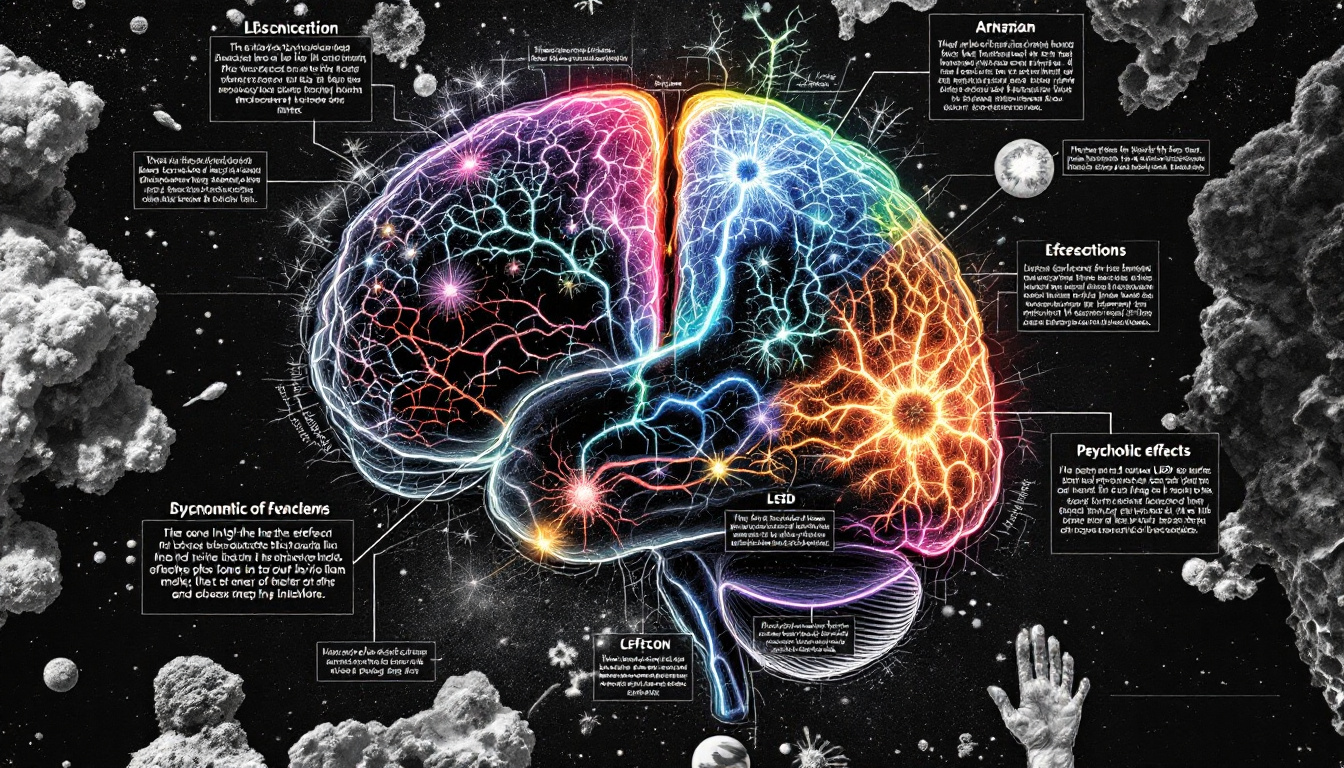LSD is renowned for its powerful impact on the brain, producing vivid hallucinations, altering thought processes, and enhancing emotional experiences. But what exactly happens in the brain when someone takes LSD? This blog dives into the neuroscience of LSD, explaining the mechanisms at play and how it leads to profound shifts in perception and consciousness.
How LSD Works in the Brain
LSD primarily influences the serotonin system, a key neurotransmitter that regulates mood, perception, and cognition. LSD binds to serotonin receptors, particularly the 5-HT2A receptor, which plays a significant role in the psychedelic experience. Activation of this receptor leads to altered sensory processing and changes in thought patterns. This results in the vivid visual and emotional experiences commonly associated with an LSD trip.
One of the most notable effects of LSD is the disruption of the default mode network (DMN). The DMN is a network of brain regions responsible for self-referential thoughts, such as daydreaming and thinking about the past or future. When the DMN is disrupted, users often report a sense of ego dissolution or loss of self, allowing them to feel more connected to their surroundings and others. This shift can lead to profound insights, heightened creativity, and altered perceptions of time and space.
Visual and Sensory Hallucinations
LSD’s effect on sensory perception is one of its most famous qualities. Users frequently report intense visual hallucinations, characterized by bright colors, shifting patterns, and distorted shapes. These changes are thought to result from increased connectivity between different areas of the brain. Normally, different regions of the brain responsible for vision, hearing, and touch are somewhat segregated in their functions. LSD, however, promotes hyperconnectivity between these areas, blending sensory inputs and producing unusual experiences like synesthesia, where users might “see” sounds or “hear” colors.
This cross-wiring of senses is further enhanced by LSD’s effects on the visual cortex, where the processing of light and imagery takes place. This area of the brain becomes hyperactive, contributing to the vivid imagery users often experience.
Changes in Emotion and Thought Patterns
Another significant impact of LSD is its effect on emotional regulation and cognition. Many users describe heightened emotions during an LSD experience, ranging from euphoria and awe to anxiety and confusion. This emotional amplification is closely tied to how LSD affects areas of the brain such as the amygdala and the prefrontal cortex.
In particular, the prefrontal cortex is involved in higher-order thinking, decision-making, and personality expression. LSD increases communication between the prefrontal cortex and other areas of the brain, which can lead to new ways of thinking, creative breakthroughs, and enhanced problem-solving skills. On the flip side, this same process can sometimes lead to overwhelming or anxiety-inducing thoughts, particularly in those who are predisposed to anxiety or depression.
The Long-Term Effects of LSD on the Brain
While the immediate effects of LSD are well-known, there’s ongoing research into the long-term impacts on the brain. Most users report that the effects of LSD wear off within 8-12 hours, but the psychological and emotional shifts can linger. Many people describe a lasting sense of insight or personal growth following their experiences. This may be due to the way LSD alters brain plasticity, or the ability of the brain to rewire itself in response to new experiences.
Some studies have shown that LSD may promote neurogenesis, or the growth of new brain cells, although more research is needed to fully understand this. Additionally, LSD’s ability to disrupt the default mode network could help explain why it has shown promise in treating mental health conditions such as depression and PTSD. By reducing rigid thought patterns, LSD may offer a new way of breaking free from the mental ruts that contribute to these conditions.
Safe Exploration of LSD
As with any substance, it’s important to approach LSD with care. The powerful changes it induces in the brain can be both enlightening and overwhelming, depending on the dosage and setting. For those interested in exploring LSD, starting with a low dose and ensuring a safe environment is crucial. Being in a comfortable setting with trusted individuals can significantly reduce the chances of a challenging experience.
For a safe and reliable source of LSD, consider shopping with LSD Canada. Use code LSD15 at checkout for 15% off your first order at lsdcanada.ca/shop.

